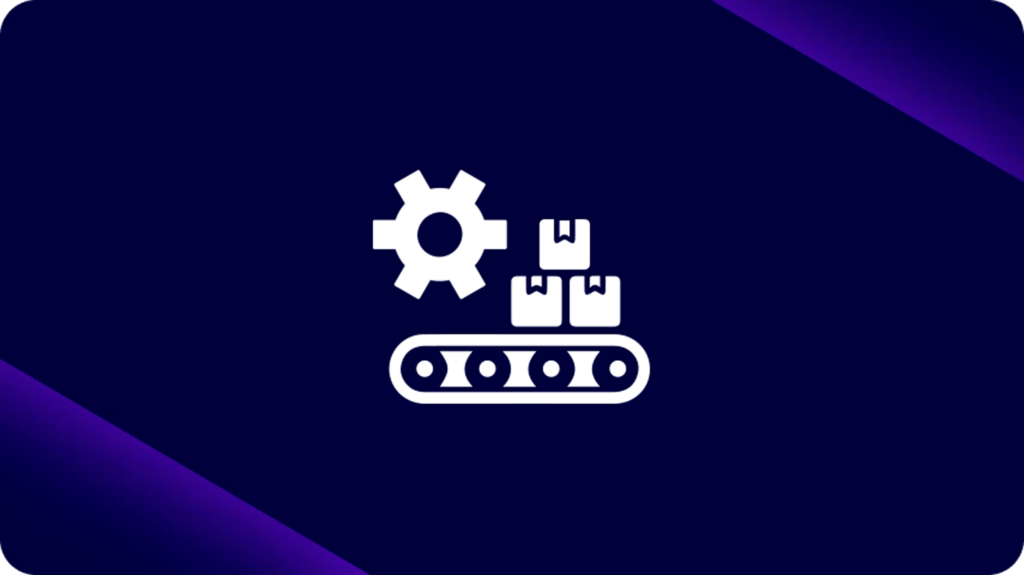junho 28, 2023
O setor industrial sempre foi pioneiro em inovação. A revolução industrial, ocorrida há mais de um século, focou na adoção de avanços mecânicos para produzir itens em velocidades e volumes anteriormente inimagináveis.
O conceito de linha de montagem de Henry Ford na década de 1910, a metodologia Kanban da Toyota nos anos 1940, o Kaizen na década de 1980 e o desenvolvimento do Six Sigma pela Motorola nos anos 1990 são exemplos de princípios revolucionários estabelecidos pela indústria, que posteriormente foram adotados por muitos outros setores.
Em 2023, os desafios enfrentados pela indústria giram em torno da manufatura integrada por computador e da proliferação de dados.
No início deste ano, conduzimos a pesquisa Digibee 2023 State of Enterprise Integration, reunindo insights de mais de mil CTOs, CIOs, arquitetos de sistemas e desenvolvedores web de setores-chave como Indústria, Finanças e Varejo.
Diversos temas abrangentes emergiram, representando os objetivos e desafios vivenciados por todos os setores, enquanto outras áreas revelaram nuances mais específicas. Neste post, exploramos os insights obtidos especificamente da Indústria e as tendências que o relatório revelou.
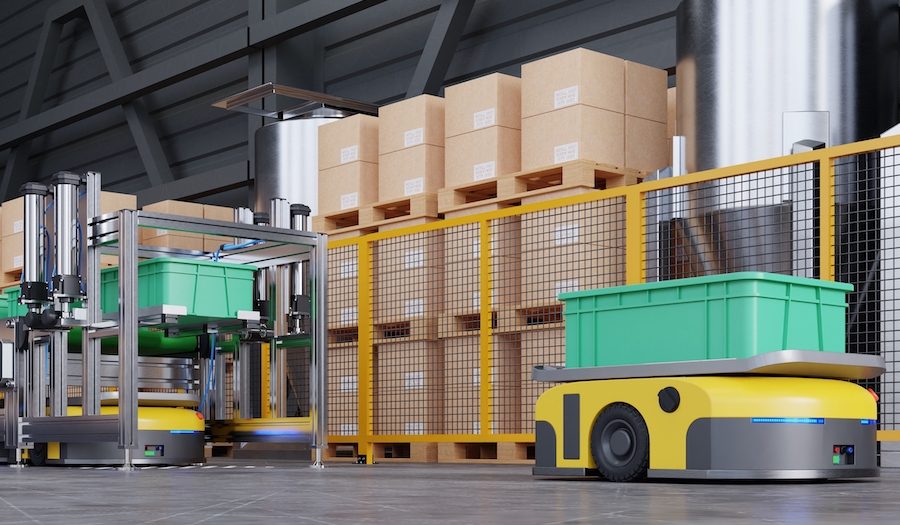
>> Agende uma demonstração personalizada com nossa equipe de especialistas e veja como o iPaaS da Digibee trará eficiência ao seu negócio.
Objetivos de integração na Indústria
Assim como na revolução industrial, os avanços tecnológicos modernos impulsionaram grandes saltos na inovação, forçando os fabricantes a se adaptarem ou correrem o risco de perder sua vantagem competitiva. Novas tendências do setor incluem servitização, hiperautomação e sustentabilidade, enquanto todas as empresas buscam se tornar mais orientadas por dados devido à rápida adoção de dispositivos conectados.
Os resultados do relatório Digibee State of Enterprise Integration indicam que a adoção dessas novas tendências e as pressões relacionadas são fatores críticos que impulsionam a integração empresarial no setor industrial:
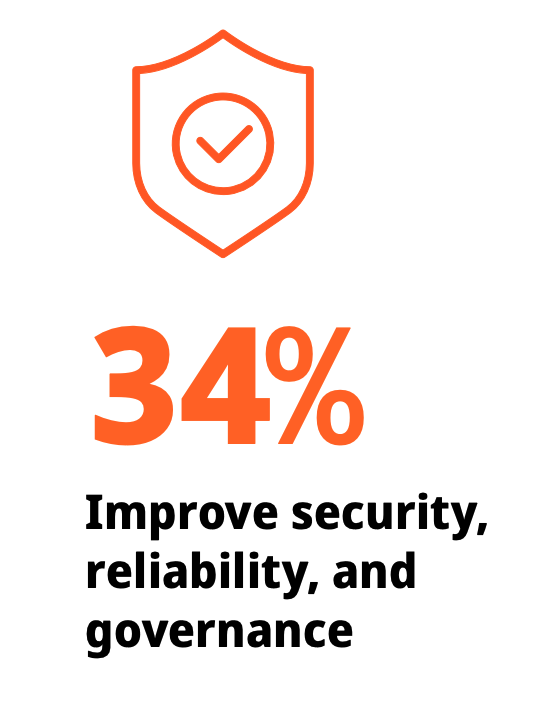
1. Melhorar segurança, confiabilidade e governança
Quando questionados sobre seus objetivos de integração, os participantes da pesquisa classificaram a melhoria em segurança, confiabilidade e governança como a 4ª prioridade geral em todos os setores. No entanto, no setor de manufatura, esta é a principal prioridade de 2023. O motivo por trás dessa preocupação é o vasto volume de dados privados valiosos que os sistemas de manufatura agora gerenciam – desde a Propriedade Intelectual por trás dos produtos até informações pessoais dos funcionários – exigindo que muitos pontos de acesso sejam protegidos em soluções integradas de manufatura.
As empresas não são mais operações isoladas; elas são componentes de infraestruturas críticas e cadeias de suprimento, o que aumenta significativamente sua exposição a riscos.
– Conselho de Tecnologia da Forbes
Embora as preocupações com segurança tenham mudado drasticamente na tecnologia de manufatura nos últimos anos, a busca por maior confiabilidade, eficiência e previsibilidade no setor remonta às suas origens.
Depois que um item é fabricado, não existe um “botão de desfazer” que recupere as valiosas matérias-primas utilizadas. Por isso, a confiabilidade nos sistemas de controle da Indústria será sempre uma prioridade, especialmente em comparação com setores que não produzem bens físicos. A integração é essencial para garantir confiabilidade, pois possibilita visibilidade e monitoramento de dados em tempo real, assegurando consistência e precisão em todas as etapas dos sistemas de execução de manufatura.
Melhorias na governança são alcançadas com base nos insights obtidos pela integração dos diferentes sistemas dentro da gestão de manufatura. Com sistemas bem integrados, é possível monitorar as operações internas em tempo real, atender a padrões de qualidade e reduzir anomalias ou erros que comprometam segurança, conformidade e segurança operacional.
2. Melhorar e ampliar a análise de negócios e a tomada de decisões
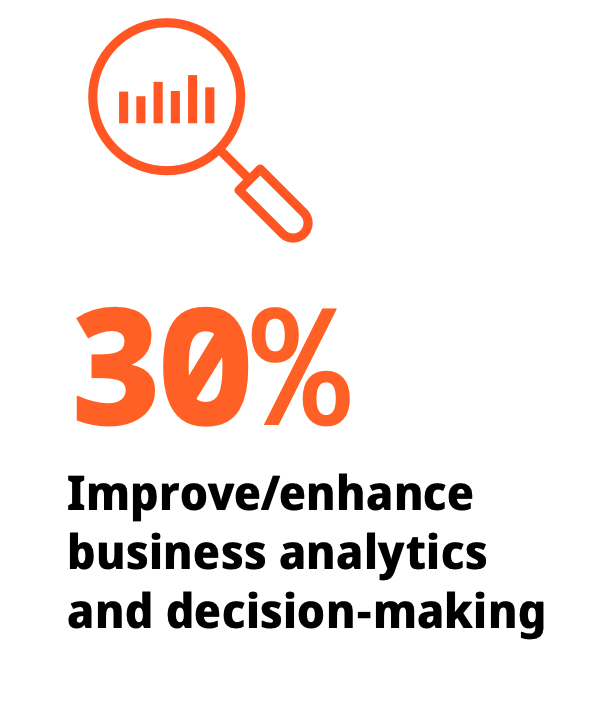 Uma melhor governança resulta em dados de maior qualidade, que, por sua vez, dão suporte às análises de negócios e à tomada de decisão.
Uma melhor governança resulta em dados de maior qualidade, que, por sua vez, dão suporte às análises de negócios e à tomada de decisão.
Com varejistas priorizando a redução do tempo de lançamento no mercado, conforme apontado na pesquisa, a pressão sobre alguns fabricantes para produzir novos produtos mais rapidamente aumentará.
A previsão de demanda de varejo utiliza análises de negócios para identificar padrões de compra e prever vendas futuras. Para se manterem à frente, os fabricantes devem adotar uma infraestrutura integrada semelhante.
Análises de negócios aprimoradas ajudam a informar a demanda, dando suporte à gestão da cadeia de suprimentos e às práticas de inventário just-in-time. Essas preocupações estão no topo da lista de prioridades, já que muitos fabricantes ainda se recuperam dos graves problemas na cadeia de suprimentos enfrentados durante a pandemia.
A integração corporativa apoia a unificação de dados de diferentes aplicações em toda a operação, simplificando o acesso e as análises de dados. Os fabricantes estão aproveitando esses valiosos repositórios de dados para apoiar e orientar seus negócios.
– Digibee
Relatório EI 2023 – O Estado da Integração Empresarial para Manufacturing
3. Habilitar a automação e a Inteligência Artificial
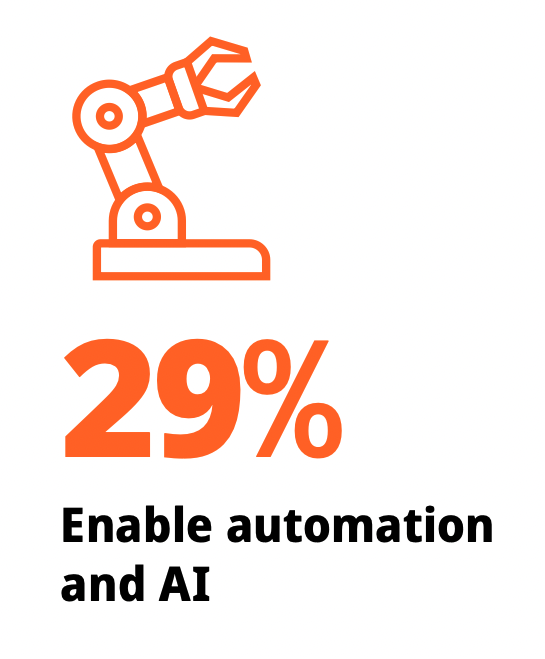
Assim como os requisitos de governança dependem de análises de negócios, a tomada de decisão depende cada vez mais da automação e da IA em sistemas de manufatura integrados.
Uma melhor integração de dados na manufatura facilita a gestão e organização de volumes maiores de informações. No entanto, esses grandes volumes de dados representam uma barreira para empresas menos tecnologicamente avançadas, que ainda dependem de sistemas legados e workflows manuais – um cenário que afeta 74% dos fabricantes .
A IA permite que os fabricantes extraiam valor significativo dos dados gerados, reconhecendo padrões em dados não estruturados e criando modelos para prever resultados futuros.
As possibilidades vão muito além do caso de uso óbvio de prever vendas futuras e extrair dados de sistemas de software de manufatura. Empresas inovadoras têm empregado ferramentas baseadas exclusivamente em monitoramento visual, como o projeto Magic Eye da ŠKODA, que identifica e prevê condições indesejáveis em seu transportador EHB3.
A IA também viabiliza uma série de capacidades inovadoras na manufatura, incluindo a automação.
Atenda a todos os seus objetivos de integração com o iPaaS da Digibee
A manufatura integrada por computadores fornece a base digital sólida necessária para se adaptar às tendências e pressões da indústria no mundo moderno. Ao otimizar o armazenamento e o acesso aos dados com a Digibee, você aproveita ao máximo o seu sistema industrial, seja qual for o desafio que você enfrente, desde a diretoria até o chão de fábrica.
Os sistemas de monitoramento intuitivos e os recursos de segurança da plataforma da Digibee permitem que você se conecte e integre com sistemas de parceiros e clientes de forma segura, garantindo uma operação em tempo real e maior eficiência.
Baixe o relatório Digibee 2023 State of Enterprise Integration for Manufacturing e tenha uma visão aprofundada de todos os dados. Entenda como seus pares estão avançando e analise tendências e observações ano a ano para orientar sua estratégia de integração.









